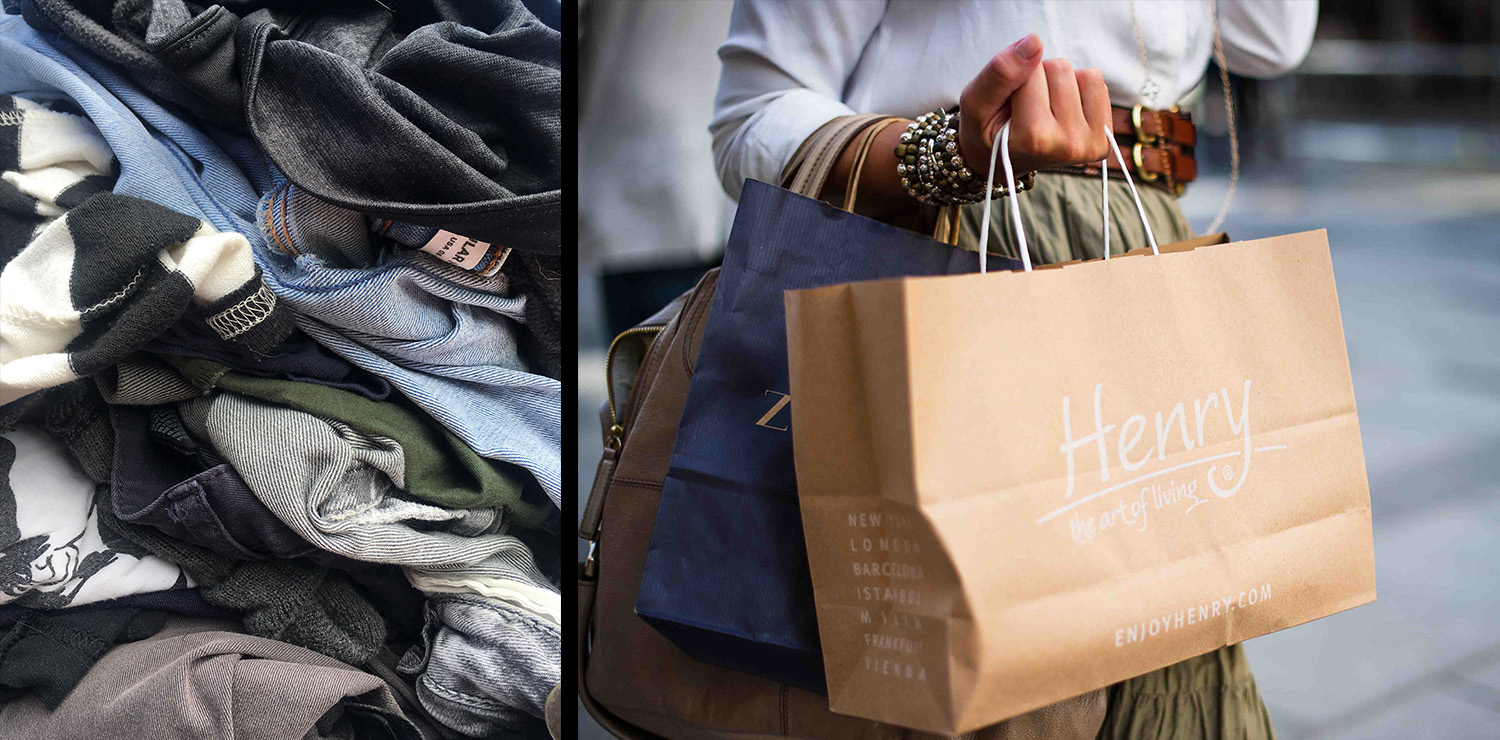August 10th, 2023
Catalysed by the COVID-19 pandemic and the languishing decline of the Great British High Street, online shopping has become the main, if not the default way we shop these days. And because it’s hard to tell if something’s right for us on a screen, it’s inevitable that some items get returned.
There’s a general understanding we have that returning something means it’s refreshed and goes back into someone else’s basket, where it’ll hopefully fit someone else better. However, a wasteful and worrying returns trend has been bubbling under the surface that many consumers are still unaware of.
Instead of managing the returns process to make sure items are resold to new customers, some retailers toss them straight into landfill or purposefully destroy them. They do this because it’s cheaper and sometimes more convenient than employing people to sort, steam, and repackage unsold stock.

H&M were accused of burning up to 12 tonnes of excess stock every year from 2013-2017 by Operation X, an investigative Danish TV show. And it’s not just fast fashion brands who’ve engaged in this practice. Luxury fashion retailer Burberry hit the headlines in 2018 for admitting they had burnt excess stock to maintain their reputation of exclusivity rather than sell it at a discounted rate.
It’s not a problem that’s exclusive to clothing, all sorts of household items are failing to fit into a circular economy. In Canada, CBC News and Basel Action Network decided to research the issue. They hid GPS trackers in 12 items from Amazon to find out where they ended up, including a coffee machine, a faux leather backpack and a printer. Just four items were resold to new customers, while one ended up in landfill, one was found at an e-waste recycling plant, and the rest are still in the warehouse or in transit.
The items being in the warehouse isn’t an enormous waste problem in itself (after all, some items might find their forever home soon.) But it’s important to note the environmental impact of toy building blocks travelling 950km before being resold, or a printer circling around for 1000km without reaching a final destination. Additionally, some returned items are sold on to liquidators or discounters “via a web of shipping, driving and flying around the globe.”
At the start of the pandemic, consumers were encouraged to shop online to stop coronavirus spreading – and most physical shops were closed, anyway. So, more and more parcels were on the move. The Interactive Media Retail Group reported that online spending rose by more than a third in 2020. Now, according to the BBC, 38% of people feel more confident in returning items.
So, what can we do to minimise this environmental problem and encourage companies to stop throwing items in otherwise perfect condition into landfill? The answer just might be within tech.

Optoro is an example of automation software that helps retailers resell unsold stock quickly and effectively – they say their technology can reduce waste by 70%. Their software helps to identify what to do with different types of returns; like whether it’s just the wrong size or if it’s faulty.
Currently, the fulfilment process can take a retailer up to 30 days to get an item back in stock – that can cost companies money. Customers might buy elsewhere; while the items take up space in warehouses. So, by automating processes, consolidating shipments and diverting excess stock into secondary markets, companies like Optoro help to keep our returns out of landfill.
It’s always great when something fits on the first try, with no need to create a return at all. However, buying clothes online involves many factors beyond whether the garment physically fits. Does it make us feel confident? Does the fabric flow nicely? Artificial intelligence tool Zeekit enables customers to upload a full-length photo to virtually ‘try on’ clothing to gauge whether they’ll like the item in real life.
Using image mapping and real-time processing technology, Zeekit creates a virtual dressing room people can use – and even directly browse clothes modelled on themselves on retailers’ websites. Hopefully, this handy tool will help to reduce returns!
Of course, we should also celebrate brands which are being transparent about their returns processes. Fashion giant ASOS shared a video explaining their zero-landfill returns policy. You can also return multiple orders in the same recycled bag, further reducing the journeys your clothing returns take. They send garments to their on-site tailors for any minor repairs. This helps 97% of items to be resold, with the remaining 3% recycled or reused.
Boden, whose 365 day returns policy is one of the most generous on the high street, also have a zero-landfill pledge. Instead, any unsold stock goes directly to good causes, like the disability charity Scope, where the clothes have raised over £1m.
Boden also offers a Care:Repair:Rewear service, where customers can send in items less than a year old that need repairing for free. The clothes are mended on-site and sent back to the customer. The focus on longevity is definitely a refreshing take in the world of ever-fast fashion.

Some stores try to discourage customers from returning items in the first place by offering a partial refund. Odds are, if you do return it, the item will be destroyed. So, if you are able to, keeping it and selling it on is a more sustainable choice in this situation. It’s not a perfect solution – after all, the onus should be on the company vs the consumer as they can provide greater change. But you’ll be sending an item directly to someone who wants it and keeping it in circulation longer.
It almost goes without saying that shopping second-hand is one of the most sustainable ways to buy new (to us) items. It’s definitely worth checking if you can pick up furniture and electrical items on Facebook Marketplace and Gumtree, as well as traditional charity shops.
When shopping online, small changes that help customers pick the correct size on the first try could be including detailed measurements in the product description. Some brands already use data, including previous returns and body measurements to intelligently recommend a size to us.

Using services like in-store click and collect can also help, because your item is delivered to a location with other packages instead of a single delivery to you. Most stores allow you to try garments on, make a decision and return it there and then.
It’s unlikely that we’ll be able to avoid returning items completely. And being considered with our online shopping is more effort than simply clicking ‘add to basket’ and it arriving a day or two later. But, as we know, there is no planet B.
An aware and considered mindset when purchasing new things is a positive step we can take to reduce our collective carbon footprint. While not everyone will be able to shop exclusively second-hand, it’s an important aspect of reduce, reuse and recycle that many of us can utilise.
Brands need to step up and take the lead and ensure their returns processes are part of a responsible supply chain, because they are capable of instigating greater change. However, taking individual steps to reduce our environmental impact does matter, and it should be encouraged. And if tech can make this easier? Even better.
Written by Misha Zala, Freelance Writer.
DISCLAIMER: We endeavour to always credit the correct original source of every image, however if you think a credit may be incorrect, please contact us at rb@hatchedlondon.com.




